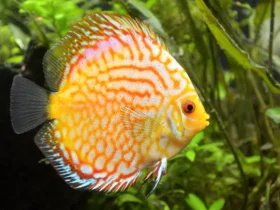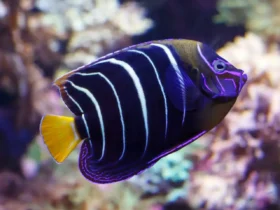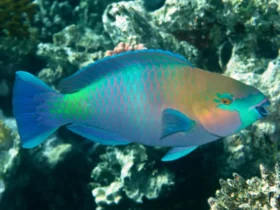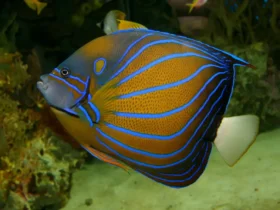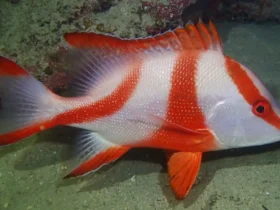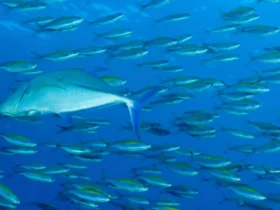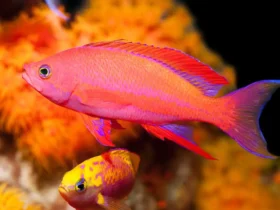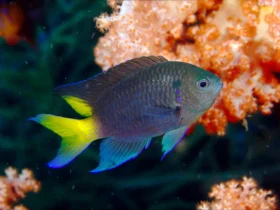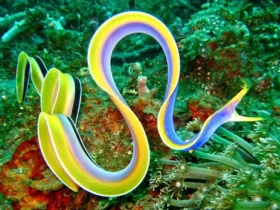Beneath the shimmering waves of the tropical seas lies a fascinating world filled with an array of vibrant marine life. Among the many captivating creatures that call the coral reefs home, the Bluehead Wrasse (Thalassoma bifasciatum) stands out with its stunning colors and intriguing behavior. With its distinctive appearance and important role in reef ecosystems, the Bluehead Wrasse has become a beloved and sought-after sight for divers and snorkelers. Let’s dive into the world of this remarkable fish and discover its fascinating characteristics.
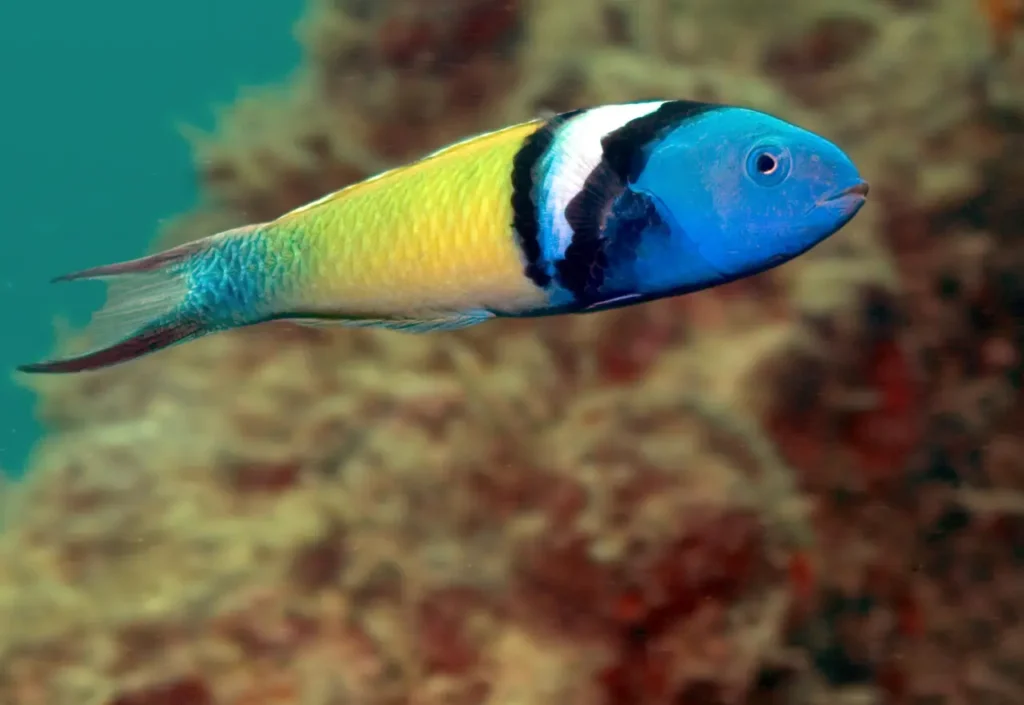
Appearance and Coloration
The Bluehead Wrasse is a small but visually striking fish that boasts a unique combination of colors. As its name suggests, the male Bluehead Wrasse features a distinctively vibrant blue head. The intensity of the blue varies depending on the fish’s mood and social status. During courtship or aggressive displays, the blue coloration becomes more pronounced, captivating the attention of observers.
Beyond its blue head, the male Bluehead Wrasse showcases a spectrum of colors. Its body is predominantly yellow, often with a greenish tinge, and adorned with intricate markings of vibrant blue and purple. The overall effect is a mesmerizing display of contrasting hues that make the fish a true jewel of the coral reefs.
Females and juvenile Bluehead Wrasses, on the other hand, exhibit a different coloration. They have a yellowish-brown body with a series of vertical stripes that help them blend into their surroundings and provide camouflage against potential predators.
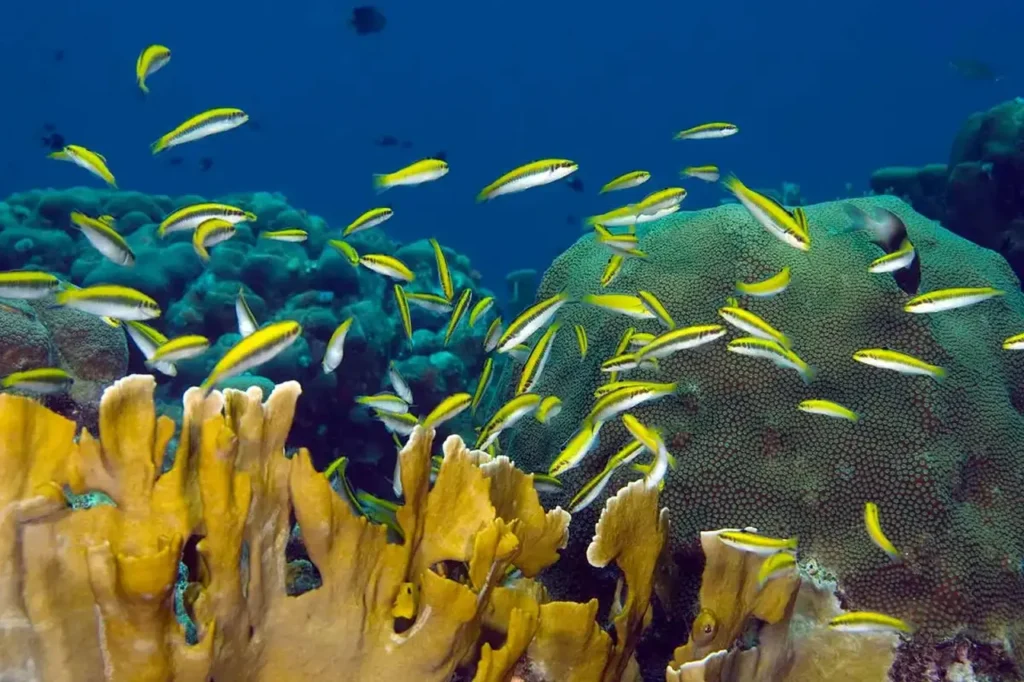
Behavior and Social Structure
Bluehead Wrasses are known for their intriguing social dynamics and unique mating system. They exhibit a sequential hermaphroditism, where individuals start as females and later transition into males as they mature. This complex reproductive strategy allows for better control of the population’s sex ratio and maximizes breeding opportunities.
Within a Bluehead Wrasse group, a dominant male, known as the “supermale,” maintains a harem of females. The supermale is distinguished by its larger size, intense blue head coloration, and aggressive territorial behavior. He protects and defends his group of females from other males seeking to challenge his dominance.
If the supermale is removed or dies, the largest female of the group will undergo a sex change, transforming into a male and assuming the dominant role. This fascinating adaptation ensures the continuity of the species’ reproductive success.
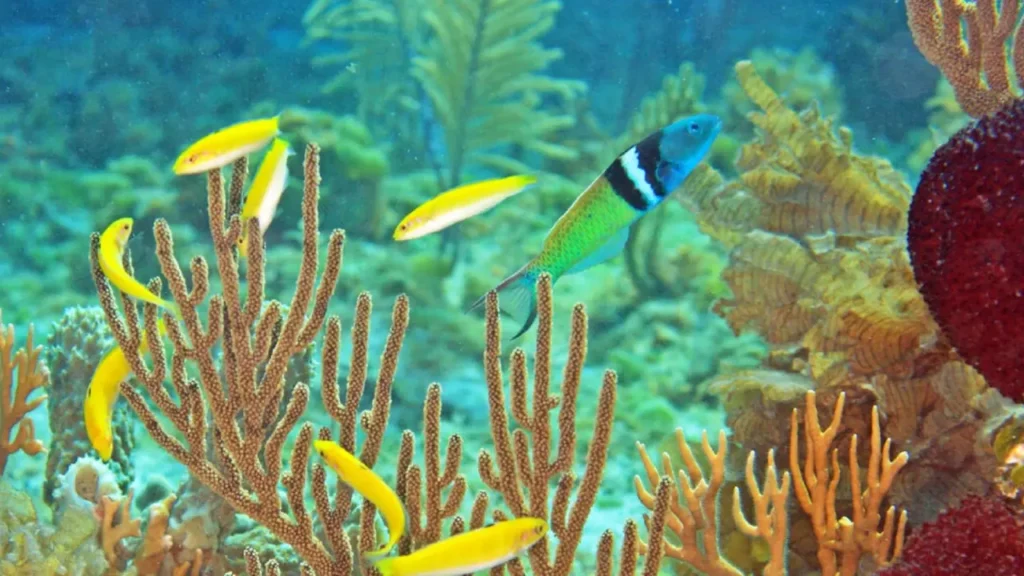
Habitat and Distribution
Bluehead Wrasses inhabit the warm, shallow waters of the Western Atlantic Ocean, primarily in the Caribbean Sea and the Gulf of Mexico. They are commonly found along the rocky shores, coral reefs, and seagrass beds of these regions. The fish seek shelter and forage among the coral formations, utilizing the crevices and gaps for protection and feeding opportunities.
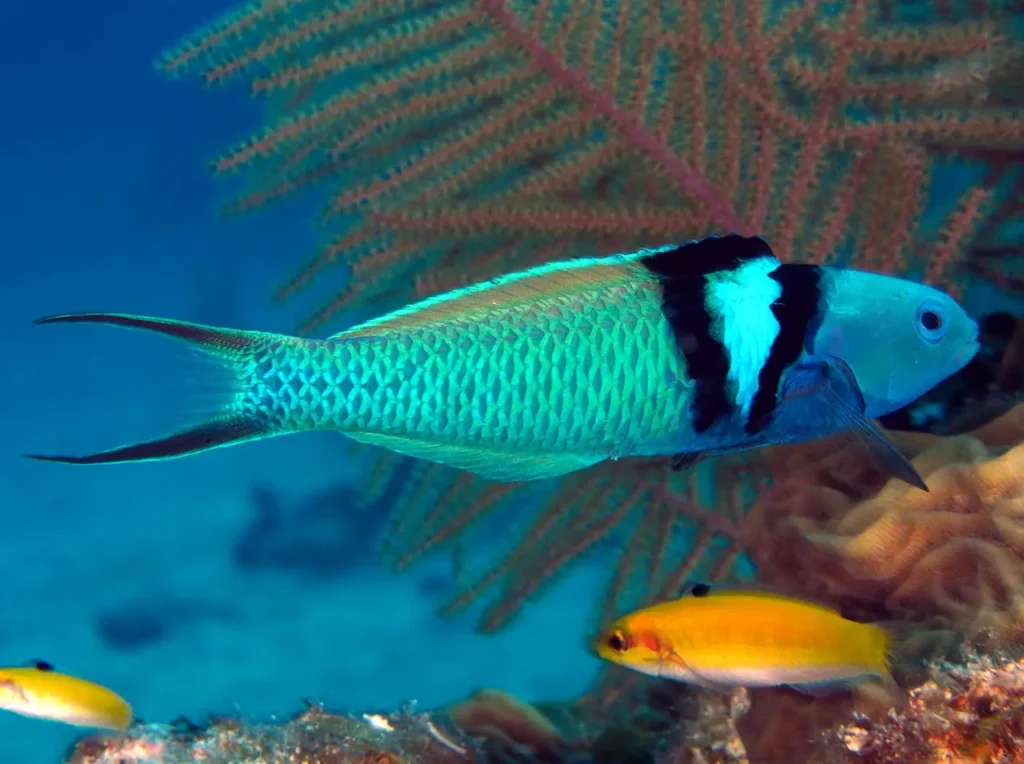
Diet and Ecological Role
Bluehead Wrasses play an essential ecological role in reef ecosystems. They have a diverse diet that consists of small invertebrates, crustaceans, and various types of zooplankton. Their foraging behavior involves probing crevices and gaps in the reef structure, picking off hidden prey and utilizing their specialized jaws to crush hard-shelled organisms.
These wrasses also serve as “cleaners” of other reef fish. They establish cleaning stations where larger fish, such as groupers or snappers, visit to have parasites and dead skin removed. This mutualistic interaction benefits both the Bluehead Wrasses, which gain food, and the “client” fish, which benefit from parasite removal.
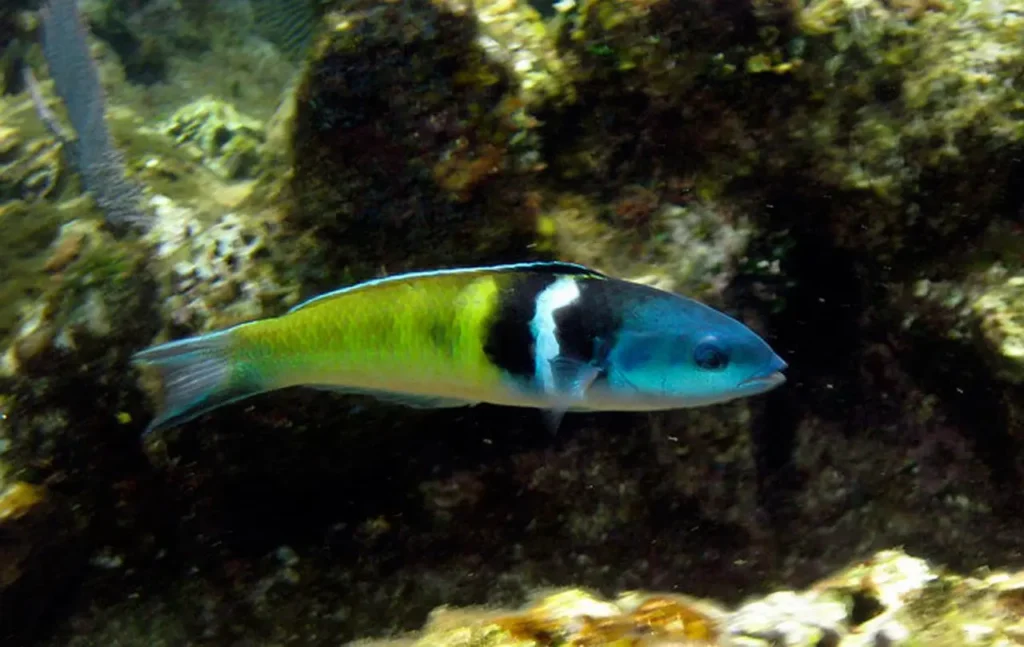
Conservation and Appreciation
The Bluehead Wrasse is not currently considered endangered or threatened. However, like many other reef-dependent species, it faces various challenges due to habitat degradation, pollution, overfishing, and climate change. The protection and conservation of coral reefs and their delicate ecosystems are crucial to ensure the survival of this beautiful fish and the preservation of the marine biodiversity it contributes to.
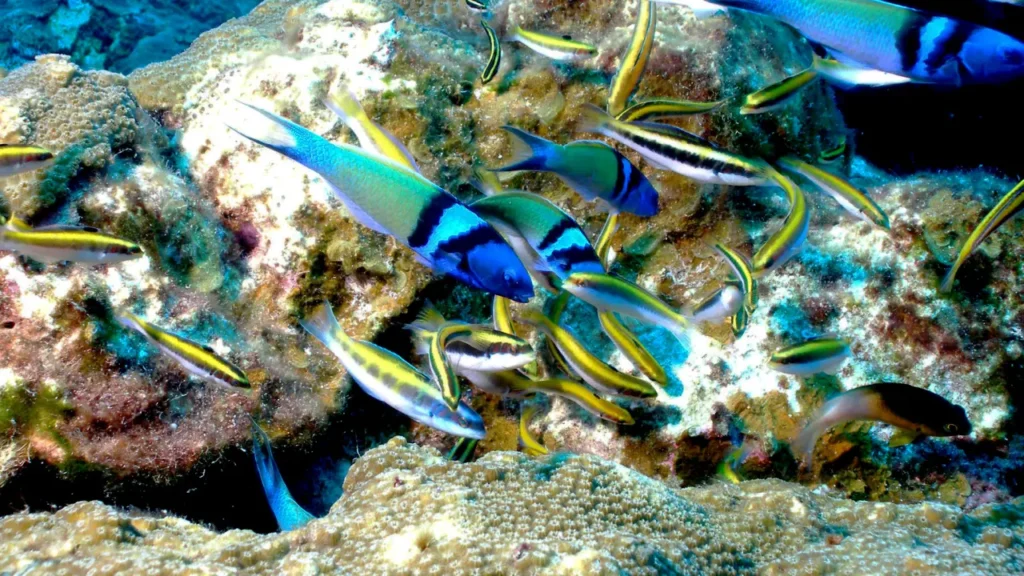
The Bluehead Wrasse, with its vibrant colors and intriguing behavior, serves as a testament to the awe-inspiring diversity found in the world’s oceans. By fostering an appreciation for these magnificent creatures and supporting efforts to protect their habitats, we can contribute to the preservation of the Bluehead Wrasse and the preservation of the extraordinary coral reef ecosystems they call home.
